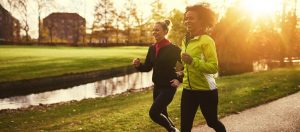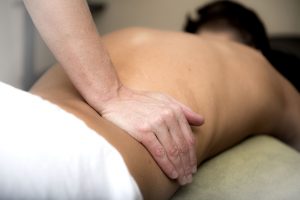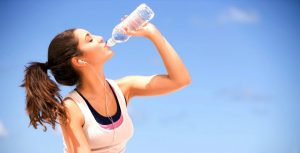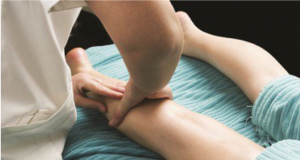What are Shin Splints?
What are Shin Splints?
We treat a lot of different conditions at The Boston Bodyworker, ranging from general stress and fatigue to chronic pain. One of the more popular complaints we get from our running population is shin splints. If you have ever had them, you know how uncomfortable the pain can be and how it sidelines you at the most inopportune times.
Shin pain, commonly along the distal (lower), inside aspect of the tibia (long bone between the knee and ankle) can seemingly come on by surprise. Even if you are being observant about your training and listening to even the “minor” aches and pains that are associated with this condition, you may still be prone to the occasional occurrence of this nagging little injury. Shin splints are quite the anomaly in the physical medicine world. There are many schools of thought about both “how” and “why” they occur as well as recommended treatment suggestion on how to combat them.
Shin splints can occur somewhat unsuspectingly, but my experience has shown me a rather consistent pattern when taking a patients history. The combination of overuse/repetitive stress is frequently accompanied by an increase in training by more than 10%. Characteristically, this occurs over a prolonged period of time after placing constant pounding and stress on bones, joints and muscles of the lower leg. However, they can also occur rather quickly, like when one starts a new training program (i.e. starting a new sport). The end result is irritation and inflammation, which leads to pain.
Some Factors that can contribute to shin splints are:
- Running down hill
- Sudden increase in your training frequency, duration or intensity
- Old shoes
- Exercising on hard or inclined surfaces
- Previous history of shin splints that may not have been rehabbed properly
- Flat feet, ridged arches and over pronation
So what is the pain I am feeling?
 The pain you are feeling can be from tight calf muscles stressing the tenoperiosteum. The ‘teno-whata-what-sium’? I know, right? The word is actually a combination of two types of connective tissues. ‘Teno’, meaning tendon, the part of the muscle that connects muscles to the bones, and the periosteum, the thin layer that envelops the bones. Over time, calf tightness can create tensile and shear loading on this area of the lower leg that can elicit severe pain. The reason pain occurs in this area and not in so many other areas the tendons attach to bones is because of a thin membrane of periosteum known as the interoseous membrane (visualize a soap bubble before you blow it through a hole) that bridges between the tibia and fibula. A portion of the tibialis posterior muscle (deep calf muscle) attaches to this thin membrane. When the muscle is placed under extreme loads and stress over time, it becomes tight, as do its counter parts, the soleus and gastrocnemius. The end result is medial tibial stress syndrome, a.k.a. shin splints.
The pain you are feeling can be from tight calf muscles stressing the tenoperiosteum. The ‘teno-whata-what-sium’? I know, right? The word is actually a combination of two types of connective tissues. ‘Teno’, meaning tendon, the part of the muscle that connects muscles to the bones, and the periosteum, the thin layer that envelops the bones. Over time, calf tightness can create tensile and shear loading on this area of the lower leg that can elicit severe pain. The reason pain occurs in this area and not in so many other areas the tendons attach to bones is because of a thin membrane of periosteum known as the interoseous membrane (visualize a soap bubble before you blow it through a hole) that bridges between the tibia and fibula. A portion of the tibialis posterior muscle (deep calf muscle) attaches to this thin membrane. When the muscle is placed under extreme loads and stress over time, it becomes tight, as do its counter parts, the soleus and gastrocnemius. The end result is medial tibial stress syndrome, a.k.a. shin splints.
Great Drew! Now how do I get rid of this so I can run? I have a race in two weeks.
I wish I had a miracle cure for this condition. If I did, I would have a business exclusively dedicated to the treatment and cure of shin splints. It would be a HUGE windfall. One in three runners will suffer a bout of shin splints in their lifetime, typically at the worst possible time (i.e. before your first marathon, starting a new exercise routine to lose weight, etc.)
Unfortunately, the only real cure is rest.
Yeah right!
Try telling that to the aforementioned inaugural marathoner.
No Magic Bullet!
I will say that I have had considerable success using active engagement techniques in conjunction with kinesiology-taping methods that have provided significant diminished pain with a return to activity. This is NOT a cure. This is merely a “Band-Aid” to get you through. Conservative treatments such as rest and ice are paramount when coping with this injury. Failure to do observe this may lead to more serious issues such as a stress fracture.
An Ounce of Prevention
There is no guaranteed way to avoid getting shin splints. If you have had them in the past or are concerned that you may get them, than a pro-active approach is required (as in any training you do). First and foremost, be conservative in ramping up any training. Anything more than 10% is inviting trouble. Following up your training with ice massage as well as some self-care techniques (calf stretches and self massage along the tibia) is your best bet for avoiding this nasty beast of an injury. Failure to consider its impact on your training is a slippery slope. True, you may never get them, but do you really want to tempt fate when you just spent the last 4 months training for the biggest race of your life?
I hope this helps you to understand a little more about shin splints. If you have questions about this or would like to know more about another type of injury you are experiencing, please shoot me an email and I will consider it for an upcoming blog post.
Until next time, Feel Better!
Ready to #feelbetter?
You're just a click away from a wicked good massage!
-

60 Minute Massage Gift Card
$170.00 Add to cart -

90 Minute Massage Gift Card
$255.00 Add to cart -

Mini Aer Small Room Air Purifier
$149.00 Add to cart -
Sale!

Thera-Pearl Sports Pack/Hot Cold
Original price was: $14.99.$12.99Current price is: $12.99. Add to cart -

3 Somadome Sessions Gift Card
$135.00 Add to cart -

20 Minute Somadome Gift Card
$45.00 Add to cart -
Sale!

TheraBand® Stretch Strap
Original price was: $19.99.$14.99Current price is: $14.99. Add to cart -

TheraBand CLX Connective Loop
$14.99 Select options
Energy Boosters
Energy Boosters Ways to Get You Through the Day No amount of coaxing, pleading, or pedal pumping could get the engine in the rental car to turn over. It was going nowhere. The travelers had filled the car with unleaded fuel, but it had a diesel engine. It had been able to run a little…
Read MoreWhat is Qi?
What is Qi? A fundamental concept of traditional Chinese medicine (TCM) dating back over 3,000 years, qi (pronounced “chee”) is the Chinese word for energy, which also carries with it connotations of “air,” “breath,” and “life force.” In TCM, it is understood that everything from humans and animals to rocks and trees is filled with…
Read MoreWhy Buy Organic?
Why Buy Organic? Is the Higher Price Worth It? While shopping in your grocery store’s produce section, you may notice the organically grown apples are pocked and not as big and perfectly round as the conventional produce, but they are more expensive. What’s the difference, and which do you choose? Your decision may significantly impact…
Read MoreAre You Making the Most of Your Massage?
Are You Making the Most of Your Massage? How to Prolong the Benefits of Bodywork A massage works in wonderful ways, easing stress and pain, calming the nervous system, increasing circulation, loosening tight muscles, stimulating internal organs, and enhancing skin. The multiplicity of physiological responses sends a simple, clear message to the mind: Massage feels…
Read MoreThe Case for Chocolate
The Case for Chocolate New Studies Show Health Benefits It’s not like we need a specific reason to eat chocolate, but it doesn’t hurt that studies are finding increasing health benefits associated with the popular indulgence. While chocolate is high in sugar and saturated fat, it does contain chemical compounds with proven benefits, so enjoy–in…
Read MoreThe Wonders of Water
The Wonders of Water For Skin Health and More Shelley Burns, N.D. Creams, nutritional supplements, treatments, lotions, and potions. We are always looking for the next miracle product to keep skin looking healthy and young. However, there is one essential, inexpensive, and often overlooked nutrient right at your fingertips:water. Just as a car cannot function…
Read MoreInvest In Your Health
Invest in Your Health Massage Offers Excellent Return onInvestment “Invest for the long term” is great financial advice, but it’s also great healthcare advice. Never is investing for the long term more important than when you are making day-to-day decisions about your health. There are short-term gains from taking care of your health, to be…
Read MoreLife Hack: Iced Cubes
Life Hack: Coffee Cubes (Redux) As usual in New England, we have gone from Winter to Summer, with Spring being an absentee season (again). Since it feels like Summer is already here, I thought it best to give you a Life Hack that is an oldy, but a goody! Iced Coffee…..CUBES! #mindblown Yes. I have offered this…
Read MoreMake a Great Save to Avoid Back Pain
Make a Great Save to Avoid Back Pain 7- Stretches in 7-Minutes I was speaking the other day with one of our therapists and we were discussing our role in helping our patients. I was explaining that a comment I often tell new patients is; “These are hands, not magic wands”. Patients often seek out…
Read MoreTime for Sleep
Time for Sleep As a nation, we may be divided, but there is one common bond that unites us all around the world; sleep. We all need sleep in order to be capable of performing every day tasks. Sleep is an imperative part of the human experience. Without a good night’s sleep, our bodies will slowly…
Read More









